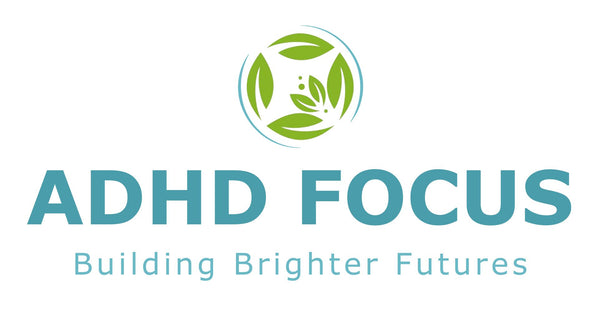
Understand ADHD Meltdowns: How Teachers Can Prevent and Respond with Confidence
Share
Empower your classroom management skills with effective strategies to confidently understand, prevent, and respond to ADHD meltdowns in students.
Teaching children with Attention Deficit Hyperactivity Disorder (ADHD) can be both rewarding and challenging. One of the most difficult aspects teachers often encounter is dealing with meltdowns in the classroom. To help educators navigate these situations with confidence, it’s crucial to understand what an ADHD meltdown looks like, why it happens, and how to respond effectively with practical tools and strategies.
What Does an ADHD Meltdown Look Like?
An ADHD meltdown is significantly different from typical misbehavior or temper tantrums. Meltdowns usually occur when a child is overwhelmed by emotions, sensory input, frustration, fatigue, or overstimulation. Unlike tantrums, these episodes are rarely intentional, and the child often loses control entirely.
Signs of an ADHD meltdown include:
- Intense emotional reactions (crying uncontrollably, anger outbursts)
- Physical agitation (kicking, hitting, throwing objects)
- Verbal outbursts (shouting, screaming, refusal)
- Withdrawal or shutting down (going silent, hiding, curling into a ball)
- Difficulty calming down, even after the triggering event passes
- Exhaustion or confusion afterward
Recognising these signs helps you quickly identify a meltdown and respond appropriately before the situation escalates further.

Why Do Meltdowns Occur In The Classroom?
ADHD meltdowns can often result from a combination of internal and external triggers. Common triggers in the classroom include:
- Overstimulation: Too much noise, bright lights, or excessive activity in the classroom.
- Frustration with tasks: Difficulty understanding instructions or struggling to complete assignments.
- Transitions: Sudden or unexpected changes to the daily schedule.
- Emotional overwhelm: Feelings of anxiety, sadness, embarrassment, or anger.
- Social conflicts: Difficulty interacting with peers or coping with social rejection.
Understanding these triggers allows teachers to anticipate potential meltdown situations and take proactive measures.
Practical Tools to Prevent ADHD Meltdowns in the Classroom
While not all meltdowns are entirely preventable, implementing practical classroom strategies can significantly reduce their frequency and intensity.
1. Structured Routines
Children with ADHD thrive on routine and structure. Clearly outline the daily schedule on the board, include visuals, and give advance notice about any changes to routine. This minimises anxiety and uncertainty.
2. Clear, Simple Instructions
Break tasks into manageable, step-by-step instructions. Use visuals, checklists, or printed guides to help students understand what’s expected of them, thereby reducing frustration.
3. Sensory-Friendly Environment
Pay attention to the sensory environment. Limit distractions by creating quiet zones, reducing clutter or adjusting lighting.
4. Regular Movement Breaks
Short breaks involving physical movement—such as stretching, brief exercises, or a quick walk around the classroom—can significantly improve attention and reduce hyperactivity and anxiety.
5. Emotional Check-Ins
Regularly check in with students emotionally. Ask how they are feeling, give them opportunities to express their emotions, and offer calm-down corners or quiet spaces when they seem overwhelmed.
How to Respond Confidently During a Meltdown In Class
Even with preventive measures, meltdowns might still occur. Knowing how to react confidently and calmly can greatly affect how quickly a student recovers.
Step 1: Stay Calm and Collected
Your calm demeanor models self-control and stability. Keep your voice gentle yet firm, and avoid emotional reactions or raised voices that could escalate the situation further.
Step 2: Provide Space
Allow the child space to calm down. Avoid crowding them physically or emotionally. Designate a safe, quiet area in your classroom where the child can retreat safely and privately.
Step 3: Validate Their Feelings
Show empathy and validate their emotional experience without condoning disruptive behavior. Statements like "I can see you're feeling really frustrated right now, and that’s okay. I'm here to help you through it," can be calming and reassuring.
Step 4: Use Calming Tools
Have a toolkit of sensory and calming resources available, such as:
- Stress balls or fidget toys
- Breathing exercises or visual breathing cards
- Soft textures like blankets or cushions
- Noise-canceling headphones
Step 5: De-escalation Techniques
Employ specific calming strategies:
- Guide them gently through breathing exercises (like the “4-7-8” breathing method: breathe in 4 seconds, hold for 7, out for 8).
- Redirect their attention with a soothing, low-stress activity (such as coloring or simple puzzles).
- Limit verbal interaction if the student is clearly overwhelmed—sometimes silent support can be the best tool.
After the Meltdown: Moving Forward
Once calm, gently discuss with the student what happened. Identify triggers together and brainstorm coping strategies for future situations. Reinforce positively when they successfully employ these strategies, helping build confidence and emotional resilience.
Collaboration with Parents: Maintain open communication with parents about what triggers meltdowns in school and effective strategies that work at home. Sharing consistent approaches provides a supportive network for the student.
Building Confidence and Trust With ADHD Students
Managing meltdowns effectively builds trust between teachers and students. It demonstrates empathy, understanding, and support, crucial for the emotional development of students with ADHD.
By proactively implementing these strategies, teachers can create a classroom environment that not only minimizes meltdowns but also empowers ADHD students to thrive academically, socially, and emotionally.
Natural Remedies
Complementing these classroom strategies with natural remedies can further support students with ADHD. Our range of natural remedies have helped thousands of children nationwide manage symptoms of hyperactivity, impulsivity, and difficulty focusing. These remedies are gentle, non-addictive, and designed to enhance overall emotional balance and focus.
Featured products:
If you have any questions or concerns, please contact our support team.
